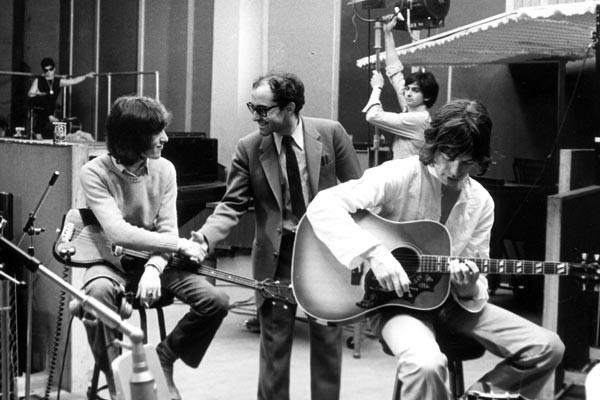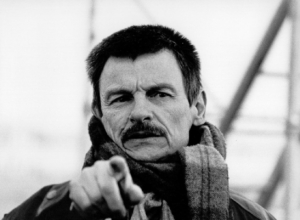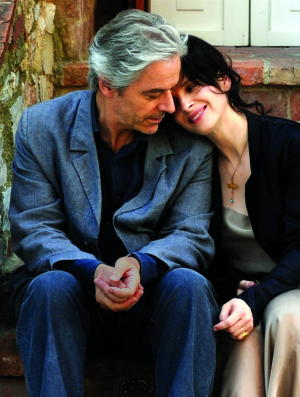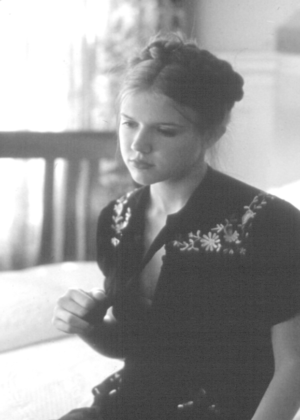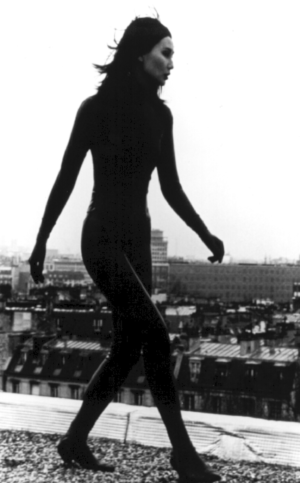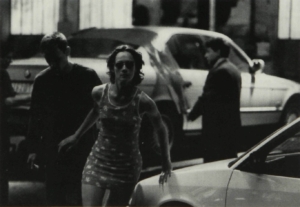‘I like films to have a beginning, middle and end, but not necessarily in that order.’ – Jean-Luc Godard
In one sentence, the French filmmaker, polemicist and Cahiers du Cinema critic-cum-nouvelle vague auteur Jean-Luc Godard said everything that needed to be said about his approach to cinema. Godard’s statement managed to summarize what it is that makes the art of filmmaking so unique; capturing the power that is wielded in the editing room, and the extent to which a film’s form and structure affects its meaning. But of course, leaving it at that wouldn’t be much fun now, would it?
As attendees of the recent Melbourne International Film Festival screenings would have noticed (the above quote flashed across screens before every film), Godard has an, shall we say, unusual approach to filmmaking. For those who attended one of the sold-out screenings of his film Sympathy for the Devil the impression will be even more ingrained. Godard’s approach to the cinema is revolutionary, and Sympathy provides plenty of evidence – albeit of the controversial variety.
Film is an art form in which editing is pushed to the fore. Though editing is arguably as important in other art forms (say, the internal editing inside the imagination of a painter, even before brush meets canvas; the seemingly endless process of drafting and redrafting a novel; the cropping and refining of photography) in nowhere but film is the editing process so overtly displayed in the finished product. In a film, we literally see the corners, the cuts, the shaping that has taken place. Godard just takes that one step further.
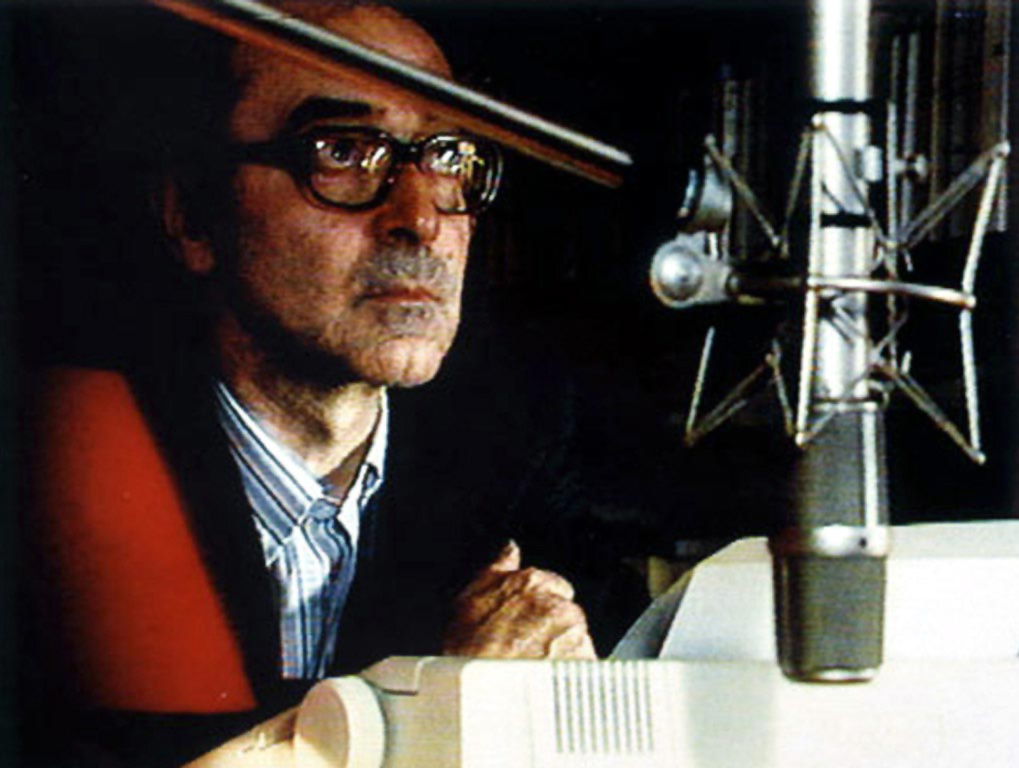
Pleased to meet you…
1968. There is electricity in the air. Though the so-called Swinging ’60s are nearly over, the art of the era is only just beginning to show signs of a politically charged, post-pubescent maturity. Jean-Luc Godard is at the peak of his creative and intellectual powers. He has spent most of the last decade creating some of the cinema’s greatest works, directing over twenty films between 1960 and the time of Sympathy for the Devil’s 1968 release. From the gangster kitsch of A bout de soufflé (1960) and Bande à part (1964) to the heart wrenching drama of Le Mepris (1963) and Deux ou trois choses que je sais d’elle (1967), Godard appears to have mastered all facets of his chosen art form. Yet he feels stale. 1968, he thinks, is the year of revolution. The year he will come into his own.
Beginning with the Marxist polemics of La Chinoise (1967) and the just-plain weirdness of Week End (1967), Godard’s late-1960s period was notable less for a proclivity for breaking the rules of filmmaking than for a refusal to acknowledge them at all. With Sympathy for the Devil, a documentary (and a rare English-language feature for Godard) detailing the construction of the famous Rolling Stones song of the same name, Godard created an entirely new kind of film. But how did he do it exactly? From, at least, a theoretical perspective, Godard’s film emerged through his own process of addition and subtraction in the editing room. (It is, then, no surprise that Godard’s preferred title for the film was One Plus One.)
As academic Royal S. Brown has written, ‘Godard’s narratives, when they exist at all, are more or less composed of a series of diachronic juxtapositions arranged within a chronology that is contained wholly within the structure of the film itself’.[1]Royal S. Brown, ‘Introduction: One Plus One Equals’ in Royal S. Brown (ed.), Focus on Godard, Prentice-Hall International, London, 1972, p.10. The point, then, is not that Godard dislikes or distrusts the narrative device; just that he considered it a secondary pursuit when compared with a film’s ideological thrust or artistic veracity. And it is this perspective which is most clearly on view in Sympathy for the Devil.
All these processes are readily apparent. Beginning the process of construction with the film’s original name, One Plus One, Godard is careful (or perhaps just naturally inclined) to refer to this at each junction of the film. The song itself is a carefully constructed piece of music – beginning with the bare acoustic bones of the song (Mick Jagger swaggers in to the rehearsal room with the first chords), and proceeding through a process of addition (a drum beat here and a ‘wooh-wooh’ there) and subtraction (to organ, or not to organ?) until a song finally emerges.
And so it is in Godard’s film.
And so it is in cinema.

Hammers and Mirrors
In many ways, Godard’s techniques are reminiscent of those of the German playwright, poet and theorist Bertolt Brecht, who famously asserted that ‘Art is not a mirror held up to reality but a hammer with which to shape it’.[2]Bertolt Brecht in Jose Macian, ‘Performance Lost’, The College Hill Independent, <http://www.brown.edu/Students/INDY/archives/2005-09-22/articles/arts-macian_theater.php>, accessed 7 August 2006. The parallels are hardly coincidental. Godard is well known for using Brechtian techniques: echoes of postmodern irony are everywhere in Jean-Paul Belmondo’s À bout de soufflé (Godard, 1960) gangster construction (Belmondo plays Michel Poiccard, all Bogart lip-curling and noir styling), and barely a scene goes by in any Godard film without some passing reference to the constructed nature of everything we’re viewing.
Pia Kleber notes that Brecht wanted his plays to be presented ‘in a revolutionary way that would instigate in the spectator the desire for knowledge and the pleasure of discovery’.[3]Pia Kleber in Pia Kleber and Colin Visser (eds), Re-interpreting Brecht: His Influence on Contemporary Drama and Film, Cambridge University Press, 1992, p.9. Similarly, Godard’s intention in creating films in which we see the seams of the editing process and the bowels of the construction are to revolutionize the very experience of watching a film.
Sympathy for the Devil is a powerful example. Though much of the film is an exercise in didacticism, at no point does Godard seek to disengage from the audience. Despite the film’s didactic nature, Godard’s approach of transparently presenting theory-as-meaning is both invigorating and informative. (This is most obvious in the several fictional vignettes which break up Sympathy’s documentary footage of the Stones making slow process through rehearsals of the song. In them, Godard variously constructs and critiques notions of: democracy and freedom (‘Eve Democracy’ and her binary yes/no answers to any and all questions); nationalism and racism; and racial appropriation (Black Panthers read from LeRoi Jones and Eldridge Cleaver while virginal white women are led to their bloody deaths); revolution (Maoists spray-paint revolutionary slogans, always unfinished, on cars and walls).
Though many have criticized Godard’s didacticism in including these ‘asides’, this vastly misses the point. His intention is not to beat us over the head with ideological rantings, but to allow us to engage with them, and in turn move through our own process of construction, in an almost Platonic dialectic with the film. Not only is Sympathy a film that cries out for criticism as much as it provides it, it is a film which in fact necessitates that dialogue. Godard’s process of editing, his choice to make not just a film about the Rolling Stones; not just a film about the Black Panthers; not just a film about fascism; but to instead join them into one whole, heaving, ideological mass is a conscious decision. Some filmmakers attempt to cover their didacticism in artistic smoke-and-mirrors; Godard does the opposite, burying a film of complexity and ambiguity underneath a veil of edification.
This approach has a further effect. Using the cut-and-paste metaphor of the words ‘One plus one’, we can see that Godard’s intention is to make a film which is, in fact, only a sum of its parts. Brilliantly, Godard’s carefully constructed film, itself a process of ‘addition and subtraction’ (as the film analogously suggests everything is) becomes a veritable time capsule of the 1960s. Each segment of Sympathy only retains its apposite meaning within the film through its relationship to the film’s respective parts. Construction is the key, and Godard purports that everything is constructed. Royal S. Brown writes, ‘all in all, the film might more aptly be entitled One Plus One Plus One Plus … , the meaning of the whole being greater than but inseparable from the fragments’.[4]Brown, op. cit., p.9.
From early on the film was embroiled in controversy regarding this very matter: Godard infamously disowned the studio’s edit, declaring to the 1968 London Film Festival audience, ‘Êtes tous des fascistes!’ and punching the stunned producer in the face.[5]Jean-Luc Godard in Bernardo Bertolucci and Geoff Andrew, ‘Bernardo Bertolucci’, British Film Institute, <http://www.bfi.org.uk/features/interviews/bertolucci.html>, accessed 1 August 2006. On face value, the changes were minimal. Whilst the studio’s version included the Stones’ playing the full version of the song at the end, Godard’s own cut eschews this ‘clean’ finale. But when we consider things from Godard’s perspective, we begin to see his point. Considering the original title’s hint at the importance of the perpetual process of construction, and New York Times critic Roger Greenspun’s contention that the film ‘suggest[s] a concern with ways of putting things together’,[6]Roger Greenspun, ‘Sympathy for the Devil (‘1 + 1’)’, The New York Times, 27 April 1970. the decision to ‘reconstruct’ the ending becomes a relatively major one.
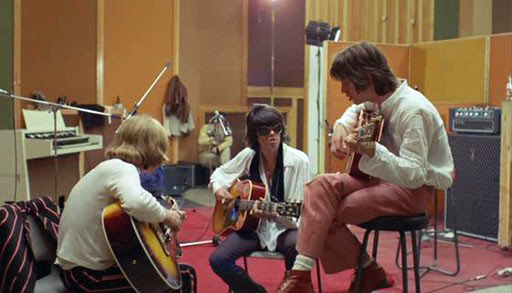
… Hope You Guessed My Name
In making Sympathy for the Devil, Godard created a cinematic essay. It had been done before (Chris Marker’s films of the 1950s and 1960s are perhaps the best examples), but never in such a way. Unlike his fellow Cahiers alumni, such as François Truffaut and Claude Chabrol, who had gone on to make relatively mainstream cinema, several of Godard’s films are striking for just how much they resemble his original written criticism, and their refusal to follow the modern rules. As he stated at the time:
Today I still think of myself as a critic, and in a sense I am, more than ever before. Instead of writing criticism, I make a film … I think of myself as an essayist, producing essays in novel form or novels in essay form: only instead of writing, I film them.[7]Jean-Luc Godard in Tom Milne (trans., ed.), Godard on Godard, Da Capo Press, Inc., New York, 1986, p.171.
From the famous ‘jump cuts’ (an editing technique where a shot does not change its frame, but a cut in time is evident) of À bout de soufflé[8]Though Godard claimed to have done this only as a time-saving feature, a greater purpose is often ascribed to it, and for good reasons. to the brilliantly elongated single-shot sequences of Le Mepris and Week End, Godard has always attempted to challenge the cinematic status quo. But mere forced controversy was not Godard’s goal. Rather, he sought to address issues and apparent stylistic lapses that he had perceived to have crept into the cinematic vocabulary. Godard, even when making films, kept his keen critical eye.
According to Godard, a film itself is merely a director’s construction and perception of the world around him or her. This might seem an obvious point, but it is little touched upon. Most symbolic of this, according to Godard, is the tracking shot; specifically, its being a matter of morality. Though it is said that Godard’s claim was merely the inverse of Luc Moullet’s assertion that ‘morality is a matter of tracking shots’,[9]Luc Moullet in Jonathan Rosenbaum, ‘The Modest Master: Luc Moullet: Agent Provacteur of the New Wave’, Chicago Reader Movie Review, <http://www.chicagoreader.com/movies/archives/2006/0306/060331.html>, accessed 29 July 2006. Godard’s films contain enough illustrative power for it to be a moot point.
If, as he claimed, a tracking shot really is a matter of morality, then the film must be the grand prism through which to view this morality. The tracking shots of Le Mepris and Week End again serve as compelling examples; in Week End the famous ten-minute journey down a car-wreck-strewn highway becomes a moral commentary on the degradation of modern society. Though such an effect could have been achieved with a series of edited together shots, the tracking shot is far more potent. It keeps our eyes glued to the screen; we never know when to blink. It eschews what has passed (as ‘past’) and anticipates what is coming as an excruciating future, with only Godard’s cinematographer (Raoul Coutard) able to stop or restart the journey.
Although the tracking shots of Sympathy for the Devil don’t enforce the kind of agonizing pace and certitude of Week End, other techniques of editing and construction step into their place. The scene with Eve Democracy is unusual enough to get anybody’s attention, but had it been dispersed throughout the films in broken-down portions of only a minute or so, its effect would have been minimal. Instead, Godard forces the audience to watch what is a remarkably ponderous (even dull) scene from start to finish – all in order to engage them. The effect, obviously, is highly unusual. What director in their right mind would force a viewer into a state of confusion and boredom in order to try and focus their attention? Only Godard. Having spent too long seeing audiences engage with films on a passive level (cinema as entertainment rather than as art or politik), Godard wanted to achieve something different. If that state happened to confuse or agitate his audiences, then all the better – at least they would finally be paying attention. Filming his ‘critical essays’ meant that Godard could express his own constructed judgements within a consciousness outside of his own mind – whether that be ‘public,’ ‘academic,’ ‘professional,’ or so on. Whereas a piece of written criticism would be seen only in its context – as a product of (and reaction to) its time – a film is more readily seen as a bold and eternal statement of truth.
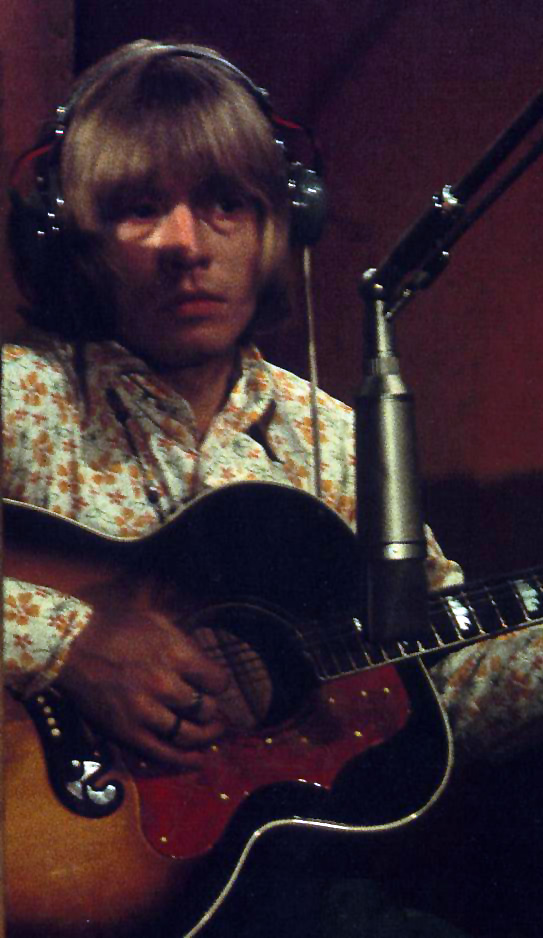
The End (perhaps)
But does any of this matter today? I believe so. To come all the way back to the beginning, to this year’s Melbourne International Film Festival, one could see the continuing influence of Godard’s process of constructed meaning in many of the films shown. Ultimately, films construct their meanings through their ability to analogize the real world via their cinematic content. This year a film called Iraq in Fragments (James Longley, 2006), a three-part journey into the war-torn country, screened at MIFF. It used montage repeatedly to successfully convey – visually and intellectually – the unrest and fragmentation affecting the country itself.
Werner Herzog’s latest film, The Wild Blue Yonder (2005) explores notions of humanity, poetry, existence, beauty, and the great meaning of life – all through an obviously constructed narrative, told to us by a slightly corny alien. But what makes the film so great is Herzog’s ability to build dramatic tension and meaning through the film’s visual elements: astronauts floating languidly through space; divers hovering over luminous fish and plant life deep and the sea. Herzog never attempts to say ‘this is my film’s meaning’; rather, we, the audience, go along on a journey of meaning construction with him.
Such examples are endless, but any further notation would be an exercise in futility because ultimately there are never enough examples. It is always possible to pick at a particular film, or a certain point-of-view – to say that this didn’t work or that contradicted something else. But in a sense, that is the great beauty of viewing and making films this way: we are all a part of this construction, this creation, and we all have the chance to get on the rollercoaster ride. The point is to engage, and enjoy it.
Endnotes
| 1 | Royal S. Brown, ‘Introduction: One Plus One Equals’ in Royal S. Brown (ed.), Focus on Godard, Prentice-Hall International, London, 1972, p.10. |
|---|---|
| 2 | Bertolt Brecht in Jose Macian, ‘Performance Lost’, The College Hill Independent, <http://www.brown.edu/Students/INDY/archives/2005-09-22/articles/arts-macian_theater.php>, accessed 7 August 2006. |
| 3 | Pia Kleber in Pia Kleber and Colin Visser (eds), Re-interpreting Brecht: His Influence on Contemporary Drama and Film, Cambridge University Press, 1992, p.9. |
| 4 | Brown, op. cit., p.9. |
| 5 | Jean-Luc Godard in Bernardo Bertolucci and Geoff Andrew, ‘Bernardo Bertolucci’, British Film Institute, <http://www.bfi.org.uk/features/interviews/bertolucci.html>, accessed 1 August 2006. |
| 6 | Roger Greenspun, ‘Sympathy for the Devil (‘1 + 1’)’, The New York Times, 27 April 1970. |
| 7 | Jean-Luc Godard in Tom Milne (trans., ed.), Godard on Godard, Da Capo Press, Inc., New York, 1986, p.171. |
| 8 | Though Godard claimed to have done this only as a time-saving feature, a greater purpose is often ascribed to it, and for good reasons. |
| 9 | Luc Moullet in Jonathan Rosenbaum, ‘The Modest Master: Luc Moullet: Agent Provacteur of the New Wave’, Chicago Reader Movie Review, <http://www.chicagoreader.com/movies/archives/2006/0306/060331.html>, accessed 29 July 2006. |
